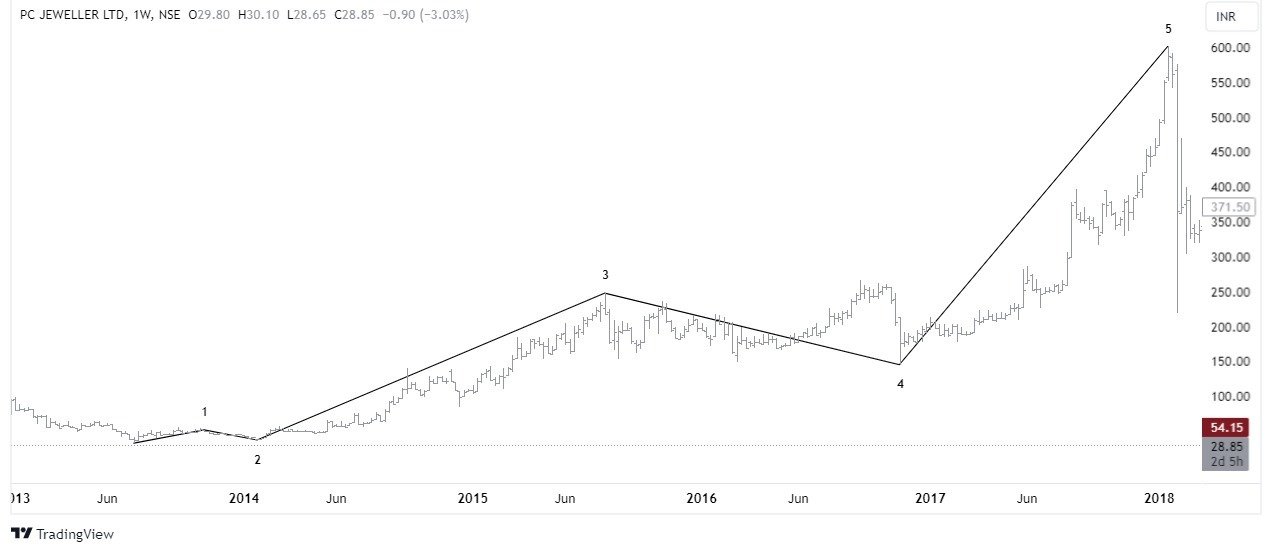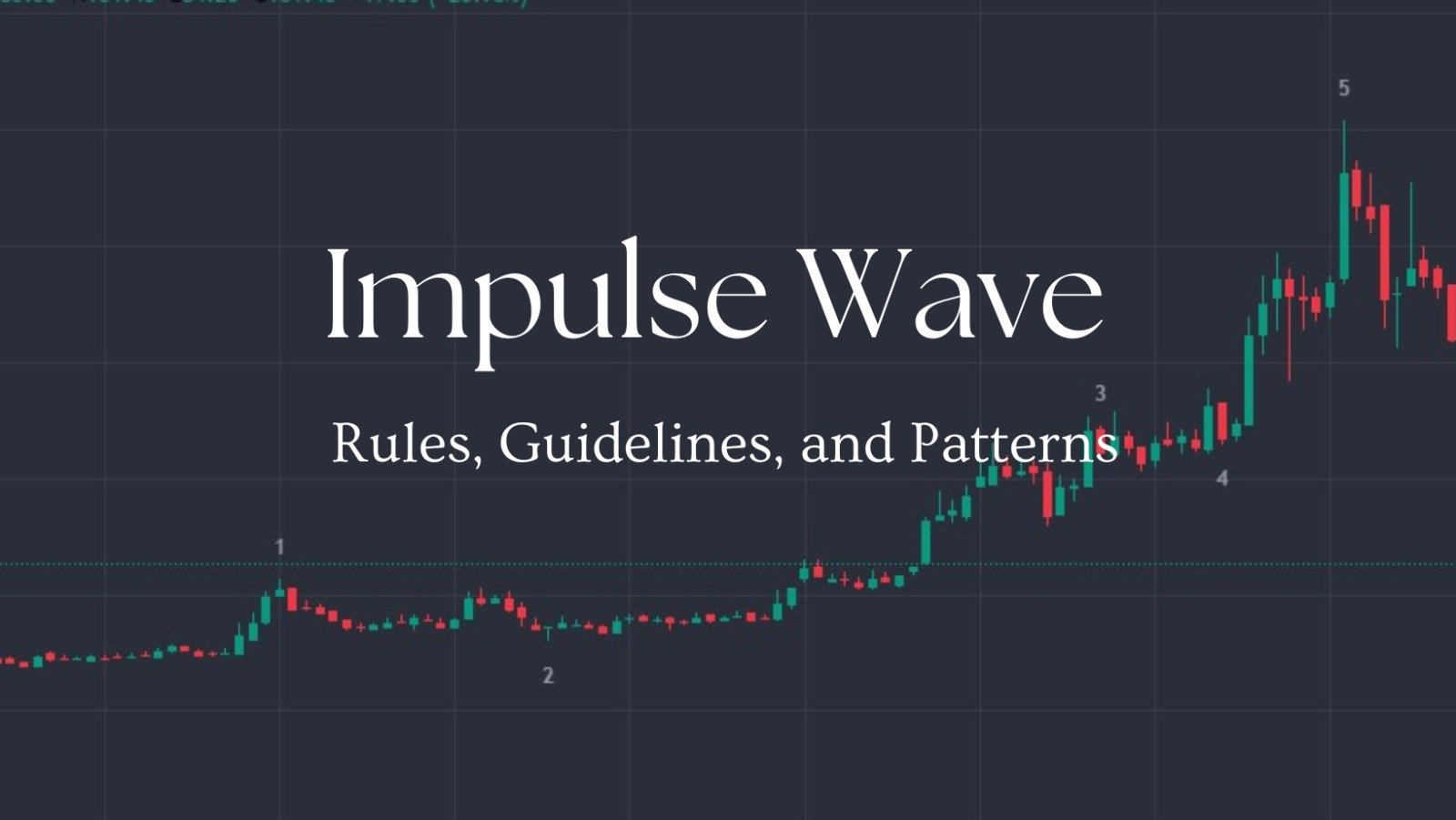The long rallies of the market are signaled by price patterns called impulse waves, according to Elliott Wave Theory. These five sub-waves are indicators of the market’s upcoming momentum and price action. Understanding the intricacies of impulse waves enables traders to predict trends and make informed investment decisions.
In Short
Among technical analysis occurrences, the impulse wave is particularly powerful and sought-after by traders and investors looking to make quick, large profits. Investors and traders often view the accurate identification of an impulse wave, a price pattern characterized by rapid and prolonged market rallies, as a great opportunity.
Traders may profit from large price changes with pinpoint accuracy if they understand the laws and characteristics of this sort of wave, which is based on Elliott Wave Theory. Gaining a deep grasp of impulse waves—their behaviors, rules, and patterns—can give you a leg up when it comes to anticipating market trends and making the most of your investments.
Impulse Wave
An impulse wave indicates powerful, trend-following price fluctuations that go in the same direction as the market as a whole. In an expanding market, you may see five separate sub-waves that work together to form an impulse wave. These waves drive the market in the same direction as the wider trend.
Traders and investors frequently watch impulse wave patterns because they provide important information about the market’s momentum and possible future price action. These waves may herald the start of major upswings or downswings, presenting profitable opportunities for those skilled at seeing them.
Impulse waves are significant because they could indicate the structure behind market fluctuations. What sets them apart from other forms of price movement is their strict adherence to predetermined norms and criteria. Take impulses, for example; waves 1, 3, and 5 usually go in the trend’s direction, while waves 2 and 4 serve as corrections. Learn about impulse waves and their structure. For example, the third wave is a long rally, not the shortest.
What Is an Impulse Wave Pattern?
An impulse wave pattern is a unique structure noticed in financial markets that represents a strong and directional price movement in the context of technical analysis and Elliott Wave Theory. This pattern is part of Elliott Wave Theory, which seeks to discover and comprehend recurring wave patterns in market price charts.
Key Characteristics of an Impulse Wave Pattern
- Impulse waves follow the prevailing trend, either upward or downward, and indicate a strong and prolonged price movement.
- Five sub-waves make up an impulse wave: waves 1, 3, and 5 move in the trend’s direction, while the waves 2 and 4 indicate corrections or retracements.
- Wave 3 in an impulse wave will be at least 161.8% of the length of Wave 1.

INOXWIND / DAILY CHART
- Wave 3 in the impulse pattern is typically the longest and most forceful.
- If wave 1 is diagonal within an impulse, it is probable that wave 3 will be extended.
- Waves 2 and 4 represent character, duration, and structural alternations.
- Wave 1 typically consists of an impulse or a diagonal..
- Wave 3 is always divided into an impulse.
- Wave 5 typically takes the form of an impulse or a diagonal form.
- Wave 2 can always be divided into zigzag, flat, or combination corrections.
- Wave 4 is a correction technique that typically involves subdividing into zigzag, flat, triangle, or combination corrections.
- Wave 3 is never the shortest wave.
- Wave 4 does not extend beyond Wave 1’s end point.
- The waves 1, 3, and 5 are never all extended.
Impulse Waves Rule
Impulse Rule 1: Wave 2 Never Surpasses Wave 1’s Starting Point
According to Elliott Wave Theory, a basic principle of impulse waves is that Wave 2 can never reach the beginning point of Wave 1. Wave 1 sets the main directional movement, and wave 2 corrects it without reversing it, thereby maintaining the general trend. Following the Wave 2 correction, we expect the market to continue marching in the direction of the larger trend.
Impulse Rule 2: Wave 3 Can Never Be the Shortest Wave
Another important rule for impulse waves in Elliott Wave Theory is that Wave 3 can never be the shortest of Waves 1, 3, and 5. This rule further strengthens Wave 3, the most powerful and energetic of the three impulse waves. Traders should expect big price movements in Wave 3, since this feature suggests that the market trend is solid and likely to continue in the direction of the impulse.
Impulse Rule 3: Wave 4 Can Never Overlap Wave 1
According to Elliott Wave Theory, one of the most important rules is that the price area of Wave 4 can never cross over into Wave 1. For this to hold true, the bottom of Wave 4 in an uptrend (or the top of Wave 4 in a downtrend) must remain above the peak of Wave 1. If Wave 4 returns to the area covered by Wave 1, it can no longer be considered an impulse wave; this would invalidate the structure.
Impulse Rule 4: Waves 4 and 2 Often Exhibit Alternation in Their Characteristics
In Elliott Wave Theory, Waves 4 and 2’s corrective patterns frequently take on different patterns as they alternate in their features (pattern, timeframe, price). If Wave 2 is powerful and deep, Wave 4 is probably going to be smoother and more intricate. To avoid repeated corrections with identical patterns, this alternation helps keep the impulse wave’s overall structure balanced.

PCJEWELLER / WEEKLY CHART
How to Identify Impulse Wave Pattern?
Identifying an impulse wave pattern entails analyzing the market‘s overall trend, noting strong and sharp movements, and verifying adherence to specified rules.
Here’s a step-by-step guide:
Step 1. Larger Trend
Impulse waves typically develop in the direction of a larger trend. Begin by identifying if the overall trend is rising or declining.
Step 2. Strong and Sharp Movements
Rapid and decisive price movements distinguish impulse waves. Look for areas of the chart where prices shift quickly and dramatically.
Step 3. 5 Wave Movements
Identify strong movements and monitor Wave 5, which often culminates in a final push in the direction of the trend.
Step 4. Verify Impulse Rules
The impulse wave must adhere to fundamental rules, including the structure of five waves (numbered 1 through 5) and their unique characteristics.
Using the Elliott Wave Principle offers an advantage in the financial markets and deepens your understanding of market dynamics. You can identify trading opportunities, recognize impulse and corrective waves, and adjust strategies based on Fibonacci retracement levels. Read more…
What Are the Different Types of Impulsive Waves?
Elliott Wave Theory categorizes impulsive waves into two main types: Normal Impulse Waves and Extended Impulse Waves.
1. Normal Impulse Waves
Structure: A normal impulse wave follows the standard five-wave pattern, labeled 1 through 5.
Characteristics: Wave 3 is not the strongest wave.

SPECIALITY / DAILY CHART
2. Extended Impulse Waves
Structure: An extended impulse wave also consists of five waves (1 through 5), but one of these waves experiences a more prolonged and stronger price movement.
The overall structure of an extended wave maintains clarity by ensuring that all sub-waves (1, 2, 3, 4, and 5) remain distinct and visible.
Characteristics: An impulse wave will extend one or two of waves 1, 3, or 5.
Wave 3 typically exceeds normal impulse length (above 161% of wave 1), often with smaller or less significant corrections in Waves 2 and 4.
Waves 1, 3, or 5 may be extended to include one or more waves.
Difference Between Diagonal and Impulse
| Impulse | Diagonal | |
|---|---|---|
| Structure | Impulse waves consist of five sub-waves: 1, 3, 4, and 5, which move in the direction of the trend; and 2, and 4, which represent corrections. | Diagonal waves, commonly referred to as wedge patterns, consist of five sub-waves that exhibit a more converging structure. Unlike impulse waves, diagonal waves often have more overlapping sub-waves. |
| Characteristics | Wave 3 is typically the longest and strongest wave. We will extend either wave 1, 3, or 5. | Diagonals are patterns with converging trendlines, indicating a decrease in the current trend. |
| Direction | Impulse waves follow the dominant trend and indicate a strong and sustained price movement. | Leading diagonals align with the larger trend and indicate strong movement, but ending diagonals indicate reversals. |
Elliott Wave theory can detect price changes in option premium charts. Index options are easy to trade and offer broad market exposure because stock market movement affects their value. Read more…
Final Thoughts
Understanding impulse waves is a powerful tool for mastering market dynamics. It helps traders identify and navigate strong trends, providing a framework for anticipating and capitalizing on market movements. However, it’s essential to recognize the subjectivity and potential challenges involved.
A holistic approach combining technical analysis, risk management, and adaptability to changing market conditions is crucial for a more informed and effective trading strategy. This approach is a cornerstone of Elliott Wave Theory.
FAQ
Can the Impulse Wave Pattern predict the future direction of the market?
While some traders claim that anticipating the Impulse Wave Pattern is as simple as detecting corrections and sub-wave 1, it’s important to remember that projecting market movements always contains inherent uncertainties. The Elliott Wave Theory gives a framework for interpreting repeating patterns based on investor psychology, and identifying corrections can be an important component of trend analysis. Successful prediction, on the other hand, necessitates a complete methodology that takes into account multiple market aspects, risk management, and responding to changing situations. The subjective nature of Elliott Wave analysis, as well as the possibility of interpretation variations among analysts, necessitate traders exercising prudence and supplementing their tactics with additional tools and analyses.
What are the challenges of using the Impulse Wave Pattern in financial analysis?
Using the Impulse Wave Pattern in financial analysis poses challenges due to its inherent subjectivity and complexity. The theory’s reliance on subjective interpretation, potential overlaps between waves, and the complexity of identifying patterns in real-time market conditions make accurate application difficult. Retrospective clarity, market noise, a lack of consensus in the financial community, and the theory’s static nature in adapting to changing market conditions contribute to the challenges. Professionals find value in Elliott Wave Theory; it is crucial to approach it with caution, complementing its insights with other analytical tools and risk management strategies.
Disclaimer
This article is provided for informational purposes only and does not offer financial advice. Trading and investing involve risk, and past performance is not a guarantee of future outcomes. Before making investment decisions, readers should conduct their own research and consider their individual circumstances. The author and platform are not responsible for any financial losses or damages resulting from the use of this information. Get personalized advice from a trained financial counselor.














Leave a Reply